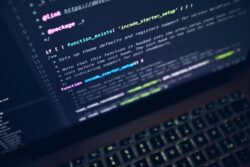Have you ever wondered about the many applications of deep learning in artificial intelligence (AI)? Deep learning, a subset of machine learning, has revolutionized the field of AI by enabling computers to learn and make decisions without explicit programming. From image recognition to natural language processing, deep learning has found its way into various industries, including healthcare, finance, and transportation, making it an essential tool for solving complex problems. In this article, we will explore some of the common applications of deep learning in AI, showcasing its immense potential for shaping the future. So, let’s embark on a journey to discover the remarkable ways in which deep learning is redefining the boundaries of artificial intelligence.
Computer Vision
Computer Vision is a field within Artificial Intelligence that focuses on enabling computers to gain a high-level understanding of digital images or videos. It involves the development of algorithms and models that can automatically extract meaningful information from visual data. Some of the common applications of computer vision are Image Recognition, Object Detection, Image Classification, and Image Segmentation.
Image Recognition
Image recognition is a computer vision task that involves identifying and categorizing specific objects or patterns within an image. Deep learning algorithms play a crucial role in achieving accurate image recognition capabilities. By training neural networks on large datasets, these models can learn to recognize and classify objects with remarkable accuracy. Image recognition has a wide range of applications, from facial recognition for authentication purposes to identifying landmarks for tourism.
Object Detection
Object detection refers to the ability of a computer system to identify and locate multiple objects within an image or a video. This is a more complex task compared to image recognition, as it requires not only recognizing the objects but also determining their precise locations. Deep learning techniques, particularly convolutional neural networks (CNNs), have significantly improved object detection algorithms. Object detection finds applications in various domains, including surveillance, autonomous vehicles, and robotics.
Image Classification
Image classification is the process of categorizing images into different predefined classes or categories. Deep learning models have revolutionized image classification by achieving exceptional accuracies. These models are trained on massive datasets that contain millions of labeled images. This allows them to learn intricate patterns and features necessary to classify images with high precision. Image classification has numerous applications, such as in healthcare for diagnosing diseases based on medical images or in quality control for identifying defects in manufacturing processes.
Image Segmentation
Image segmentation aims to divide an image into distinct regions or objects to facilitate further analysis or understanding. Deep learning techniques, particularly convolutional neural networks, have contributed significantly to advancing image segmentation algorithms. These models are trained to label each pixel in an image according to the object it belongs to. Image segmentation finds applications in various fields, including medical imaging for identifying specific structures within the body and autonomous vehicles for understanding the surrounding environment.
Natural Language Processing (NLP)
Natural Language Processing (NLP) is a branch of Artificial Intelligence that focuses on enabling computers to understand, interpret, and generate human language. It involves the development of algorithms and models that can process and analyze natural language data. Some of the common applications of NLP are Sentiment Analysis, Language Translation, Named Entity Recognition, and Text Generation.
Sentiment Analysis
Sentiment analysis, also known as opinion mining, is the process of determining the sentiment or emotion expressed in a piece of text. Deep learning models have played a crucial role in enhancing sentiment analysis capabilities. By training on large datasets containing labeled data, these models can learn to accurately classify text into positive, negative, or neutral sentiments. Sentiment analysis finds applications in various domains, including social media analysis, market research, and customer feedback analysis.
Language Translation
Language translation involves automatically translating text from one language to another. Deep learning models, particularly sequence-to-sequence models like recurrent neural networks (RNNs) and transformer models, have revolutionized language translation systems. By training on vast amounts of bilingual data, these models can learn to generate translations with significant accuracy. Language translation is widely used in applications like online language translators, multilingual customer support, and global communication.
Named Entity Recognition
Named Entity Recognition (NER) is the task of identifying and categorizing named entities, such as names, locations, organizations, and dates, within a piece of text. Deep learning models, particularly recurrent neural networks and transformer models, have advanced NER systems by achieving state-of-the-art performance. By training on annotated data, these models can recognize and classify various named entities accurately. NER finds applications in information extraction, question answering systems, and text summarization.
Text Generation
Text generation involves automatically generating new text based on a given input or context. Deep learning models, such as recurrent neural networks and transformer models, have shown impressive capabilities in generating coherent and contextually relevant text. By training on large corpora of text data, these models can learn to generate text that resembles human-written content. Text generation has applications in various areas, including chatbots, creative writing assistance, and content generation for news articles or product descriptions.

Speech Recognition
Speech recognition is the ability of a computer system to convert spoken language into written text. It plays a significant role in enabling computers to understand and interact with humans through speech. Some of the common applications of speech recognition are Voice Commands, Speech-to-Text Conversion, and Speaker Identification.
Voice Commands
Voice commands refer to the ability to control a computer or a device through spoken instructions. Deep learning models, particularly recurrent neural networks and transformer models, have greatly improved the accuracy and usability of voice command systems. These models can learn to recognize and interpret spoken commands, allowing users to perform various tasks hands-free. Voice commands are widely used in virtual assistants, smart home devices, and automotive voice control systems.
Speech-to-Text Conversion
Speech-to-Text Conversion, also known as Automatic Speech Recognition (ASR), involves converting spoken language into written text. Deep learning models, including recurrent neural networks and transformer models, have significantly advanced speech-to-text conversion systems. By training on large speech datasets, these models can accurately transcribe spoken words into text. Speech-to-text conversion has applications in transcription services, voice assistants, and accessibility tools for individuals with hearing impairments.
Speaker Identification
Speaker identification is the process of recognizing and identifying the individual based on their unique vocal characteristics. Deep learning models, particularly neural networks, have made significant advancements in speaker identification systems. These models can learn to extract relevant features from speech signals and match them to pre-recorded patterns or voiceprints to identify the speaker. Speaker identification finds applications in security systems, forensic investigation, and personalized voice-controlled devices.
Recommendation Systems
Recommendation systems are algorithms and models that suggest relevant items or content to users based on their preferences, behavior, or similarities to other users. Deep learning techniques have been successfully applied to enhance the accuracy and performance of recommendation systems. Some of the common types of recommendation systems are Personalized Recommendations, Content Filtering, and Collaborative Filtering.
Personalized Recommendations
Personalized recommendations aim to provide users with individualized suggestions based on their past actions, preferences, or demographics. Deep learning models, particularly collaborative filtering-based models and deep neural networks, have shown promising results in improving the personalization of recommendation systems. These models can learn complex patterns in user behavior and make accurate predictions about the items that a user is likely to prefer. Personalized recommendations are used in various domains, including e-commerce, streaming platforms, and news article recommendations.
Content Filtering
Content filtering is a recommendation technique that suggests items or content to users based on their similarity to the items they have previously interacted with or liked. Deep learning models, particularly embedding-based models, have proved effective in content filtering by learning representations of items or content that capture their underlying characteristics. These models can then recommend items with similar embeddings to the ones a user has shown interest in. Content filtering is commonly used in e-commerce platforms, content streaming services, and news recommendation systems.
Collaborative Filtering
Collaborative filtering is a recommendation technique that suggests items or content to users based on the preferences and behavior of similar users. Deep learning models, such as matrix factorization and deep neural networks, have been successful in enhancing collaborative filtering algorithms. These models can capture complex patterns in user-item interactions and predict the preferences of users based on the similarities they share with other users. Collaborative filtering is widely used in recommendation systems for movies, music, and social media platforms.

Fraud Detection
Fraud detection involves identifying and preventing fraudulent activities or transactions by analyzing patterns and anomalies in data. Deep learning techniques have been increasingly utilized in fraud detection systems due to their ability to extract meaningful features and identify complex fraud patterns. Common applications of deep learning in fraud detection include Credit Card Fraud, Insurance Fraud, and Identity Theft Detection.
Credit Card Fraud
Credit card fraud refers to unauthorized or fraudulent activities performed using stolen credit card information. Deep learning models, particularly neural networks and anomaly detection algorithms, have been instrumental in detecting credit card fraud accurately. These models can learn to identify patterns of fraudulent transactions and detect anomalies that deviate from regular usage patterns. Credit card fraud detection systems help financial institutions and consumers detect and prevent fraudulent activities, minimizing financial losses.
Insurance Fraud
Insurance fraud involves individuals or groups deceiving insurance companies for financial gain through illegal activities, such as falsifying claims or inflating damages. Deep learning models, particularly neural networks and anomaly detection algorithms, have shown promising results in detecting insurance fraud. By analyzing historical claim data and identifying patterns of fraudulent behavior, these models can flag suspicious claims and help insurance companies investigate potential fraud cases more efficiently.
Identity Theft Detection
Identity theft refers to the illegal use of someone’s personal information, such as social security numbers or financial details, to commit fraud or other criminal activities. Deep learning models, particularly neural networks and anomaly detection techniques, have been effective in detecting identity theft by analyzing patterns of fraudulent behavior or identifying anomalies in user activities. Identity theft detection systems help individuals and organizations detect and prevent unauthorized use of personal information, protecting them from financial and reputational damages.
Medical Diagnosis
Medical diagnosis involves the identification and classification of diseases, conditions, or abnormalities in patients based on medical data, such as medical images or patient records. Deep learning techniques have shown significant potential in enhancing medical diagnosis capabilities, enabling more accurate and timely diagnoses. Some of the common applications of deep learning in medical diagnosis are Radiology Image Analysis, Disease Diagnosis, and Drug Discovery.
Radiology Image Analysis
Radiology image analysis involves interpreting and analyzing medical images, such as X-rays, CT scans, or MRIs, to diagnose diseases or abnormalities. Deep learning models, particularly convolutional neural networks and deep learning-based segmentation algorithms, have achieved remarkable results in radiology image analysis. These models can learn to identify specific structures, detect anomalies, and provide support to radiologists in making accurate diagnoses. Radiology image analysis using deep learning has the potential to improve the efficiency and accuracy of disease detection and diagnosis.
Disease Diagnosis
Disease diagnosis involves using medical data, such as patient symptoms, medical history, or laboratory results, to identify and classify diseases accurately. Deep learning techniques, including neural networks and decision trees, have shown promising results in disease diagnosis by learning patterns and correlations in medical data. By training on large datasets containing patient information, these models can make accurate predictions and assist healthcare professionals in diagnosing various diseases, leading to more effective treatment plans.
Drug Discovery
Drug discovery involves the identification and development of new drugs to treat diseases or medical conditions. Deep learning models, particularly generative models and deep neural networks, have emerged as powerful tools in accelerating the drug discovery process. These models can analyze large databases of molecular structures, predict the properties and activities of potential drug candidates, and guide researchers in selecting promising compounds for further investigation. Deep learning in drug discovery holds great promise for finding new therapeutic solutions and improving the efficiency of pharmaceutical research.

Autonomous Vehicles
Autonomous vehicles, also known as self-driving cars, are vehicles capable of navigating and operating without human intervention. Deep learning techniques play a vital role in enabling autonomous vehicles to perceive and understand the surrounding environment, enabling safe and efficient transportation. Some of the common applications of deep learning in autonomous vehicles are Object Recognition, Lane Detection, and Autonomous Navigation.
Object Recognition
Object recognition in autonomous vehicles involves identifying and classifying various objects, such as pedestrians, cars, or traffic signs, in real-time. Deep learning models, particularly convolutional neural networks and object detection algorithms, have significantly improved object recognition capabilities in autonomous vehicles. These models can learn to detect and classify objects accurately, allowing autonomous vehicles to make informed decisions and take appropriate actions, ensuring safety on the roads.
Lane Detection
Lane detection is an essential task in autonomous vehicles that involves identifying the lanes on the road and determining the vehicle’s position relative to those lanes. Deep learning models, such as convolutional neural networks and image segmentation algorithms, have made significant advancements in lane detection systems. These models can learn to identify lane markings and predict their trajectories, helping autonomous vehicles stay within the designated lanes and navigate through complex road scenarios.
Autonomous Navigation
Autonomous navigation refers to the ability of a vehicle to plan and navigate routes, make decisions, and interact dynamically with its environment without human intervention. Deep learning techniques, particularly reinforcement learning and deep neural networks, have played a crucial role in enabling autonomous navigation in vehicles. These models can learn to map the environment, predict future states, and make informed navigation decisions, ensuring safe and efficient autonomous driving experiences.
Robotics
Robotics involves the design, creation, and operation of robots that can perform tasks autonomously or with minimal human intervention. Deep learning techniques have significantly advanced the capabilities of robots, enabling them to perceive, navigate, and interact with the environment more effectively. Some of the common applications of deep learning in robotics are Robot Navigation, Object Manipulation, and Path Planning.
Robot Navigation
Robot navigation involves enabling robots to move from one location to another autonomously or with minimal human intervention. Deep learning models, particularly reinforcement learning algorithms and deep neural networks, have enhanced robot navigation capabilities. These models can learn from experience, map the environment, and plan optimal paths to reach the desired destinations. Robot navigation finds applications in various domains, including warehouse automation, logistics, and search and rescue operations.
Object Manipulation
Object manipulation refers to the ability of a robot to interact with and handle objects in its environment, such as picking, grasping, or manipulating objects. Deep learning techniques, including reinforcement learning and imitation learning, have improved object manipulation skills in robots. By training on large datasets of human demonstrations or trial-and-error interactions, these models can learn to perform complex object manipulation tasks accurately and efficiently. Object manipulation skills are crucial in industrial automation, manufacturing, and household robotics.
Path Planning
Path planning involves determining the optimal route or path for a robot to navigate through its environment to reach a specific destination while avoiding obstacles. Deep learning models, particularly reinforcement learning-based algorithms and neural networks, have advanced path planning capabilities in robotics. These models can learn to predict obstacle locations, plan collision-free paths, and adapt to dynamic environments in real-time. Path planning is crucial for autonomous robots operating in complex or unknown environments, such as exploration robots or drones.
Virtual Assistants
Virtual Assistants are AI-powered software applications that provide assistance and perform tasks based on voice commands or text inputs from users. They aim to provide personalized and efficient support in various domains, including communication, scheduling, and automation. Some of the common functionalities of virtual assistants are Speech Recognition, Language Understanding, and Task Automation.
Speech Recognition
Speech recognition is a key component of virtual assistant technology that enables systems to convert spoken language into written text. Deep learning models, particularly recurrent neural networks and transformer models, have significantly improved the accuracy and usability of speech recognition in virtual assistants. These models can learn to recognize and interpret spoken commands or queries, enabling seamless interaction between users and virtual assistants through voice inputs.
Language Understanding
Language understanding is the ability of a virtual assistant to comprehend and interpret the meaning of natural language inputs from users. Deep learning techniques, including sequence-to-sequence models and transformer models, have advanced language understanding capabilities in virtual assistants. These models can learn to understand user intents, extract relevant information, and provide appropriate responses or actions. Language understanding is crucial for virtual assistants to accurately interpret user requests and provide meaningful assistance.
Task Automation
Task automation refers to the ability of virtual assistants to perform repetitive or mundane tasks automatically based on user instructions or predefined rules. Deep learning models, particularly workflow automation systems and task-specific models, have enhanced the automation capabilities of virtual assistants. These models can learn to execute predefined workflows, automate data entry, or interact with other software systems, relieving users of manual and time-consuming tasks. Task automation in virtual assistants helps improve productivity and efficiency in various personal and professional tasks.
Financial Analysis
Financial analysis involves the examination and interpretation of financial data to assess the performance, stability, and health of a company or investment. Deep learning techniques have been increasingly utilized in financial analysis to enhance prediction accuracy, optimize trading strategies, and assess risks. Some of the common applications of deep learning in financial analysis are Stock Market Prediction, Trading Strategy Optimization, and Risk Assessment.
Stock Market Prediction
Stock market prediction involves forecasting future market trends, prices, or performance to assist investment decisions. Deep learning models, particularly recurrent neural networks and long-short-term-memory (LSTM) networks, have shown promising results in stock market prediction. These models can learn patterns from historical stock prices, market indicators, or news sentiment, and make predictions about future stock values or market movements. Stock market prediction using deep learning helps investors, traders, and financial institutions make informed decisions and manage risks.
Trading Strategy Optimization
Trading strategy optimization involves using historical market data to improve trading strategies and decision-making processes. Deep learning models, particularly reinforcement learning algorithms and deep neural networks, have advanced trading strategy optimization by learning and adapting to market dynamics. These models can learn from historical data, simulate trading scenarios, and optimize trading strategies by maximizing profits or minimizing risks. Trading strategy optimization using deep learning helps traders and financial institutions improve their trading performance and achieve better investment outcomes.
Risk Assessment
Risk assessment in financial analysis involves analyzing and evaluating potential risks associated with investments, portfolios, or financial decisions. Deep learning models, particularly deep neural networks and anomaly detection algorithms, have shown effectiveness in risk assessment tasks. These models can recognize patterns of fraudulent activities, identify anomalies in financial data, or predict potential risks based on historical trends. Risk assessment using deep learning helps individuals and organizations make more informed and proactive financial decisions, mitigating potential risks and ensuring financial stability.
In conclusion, deep learning has revolutionized various fields within artificial intelligence, enabling significant advancements in computer vision, natural language processing, fraud detection, medical diagnosis, autonomous vehicles, robotics, virtual assistants, and financial analysis. By leveraging deep learning techniques, computers and AI systems can gain a higher level of understanding, perception, and decision-making capabilities, resulting in improved performance, efficiency, and accuracy across a wide range of applications. The widespread adoption of deep learning in AI has the potential to shape numerous industries and revolutionize the way we interact with technology in our daily lives.






